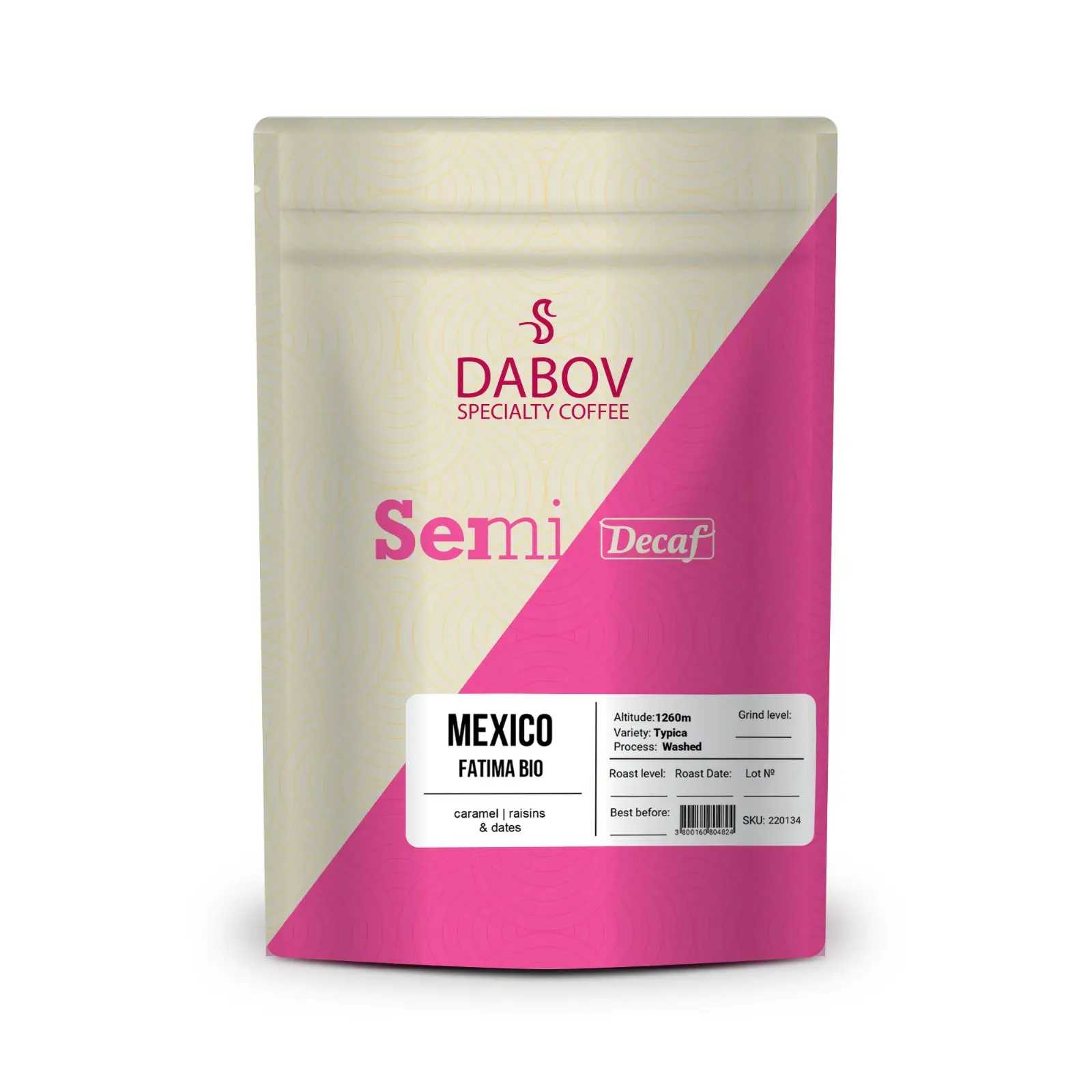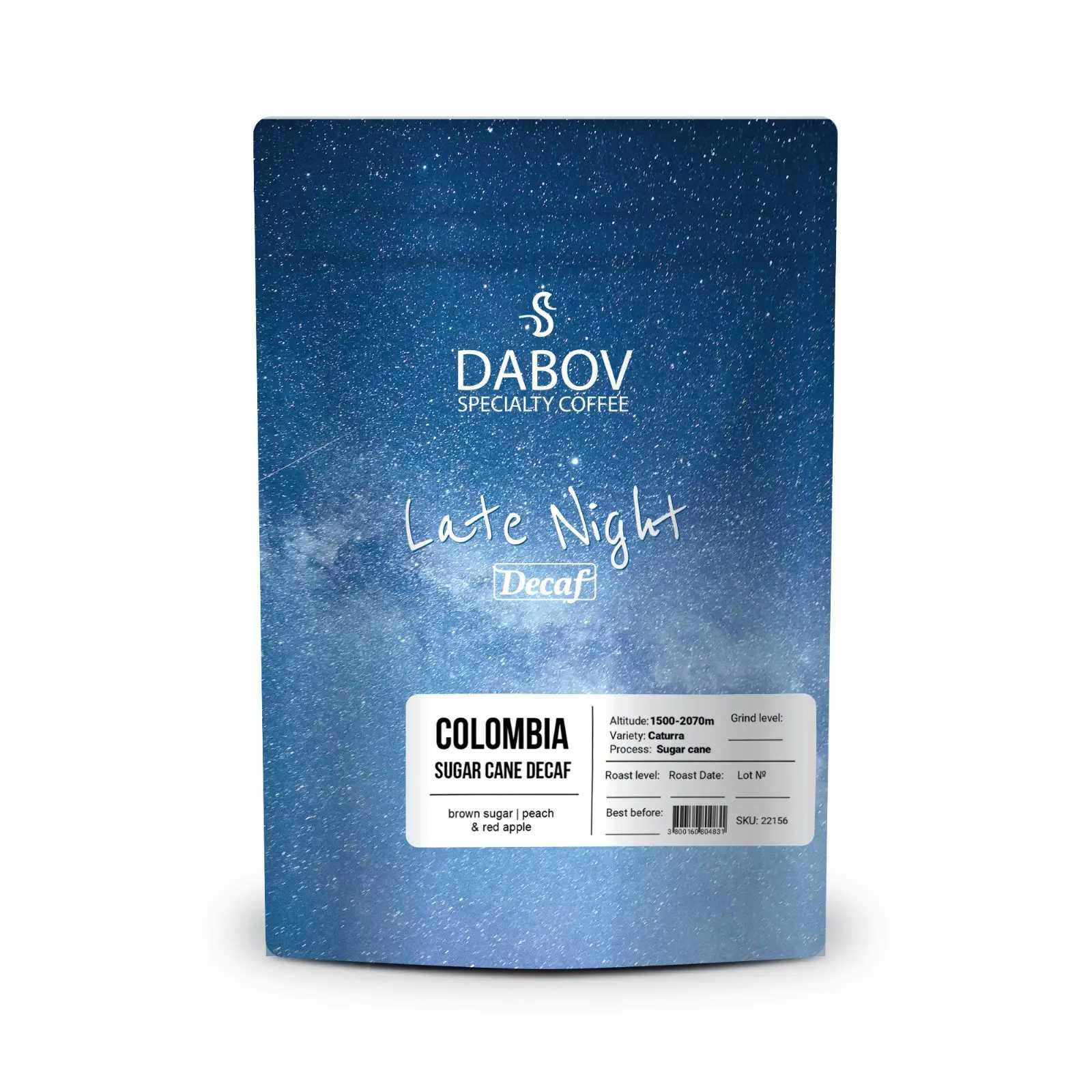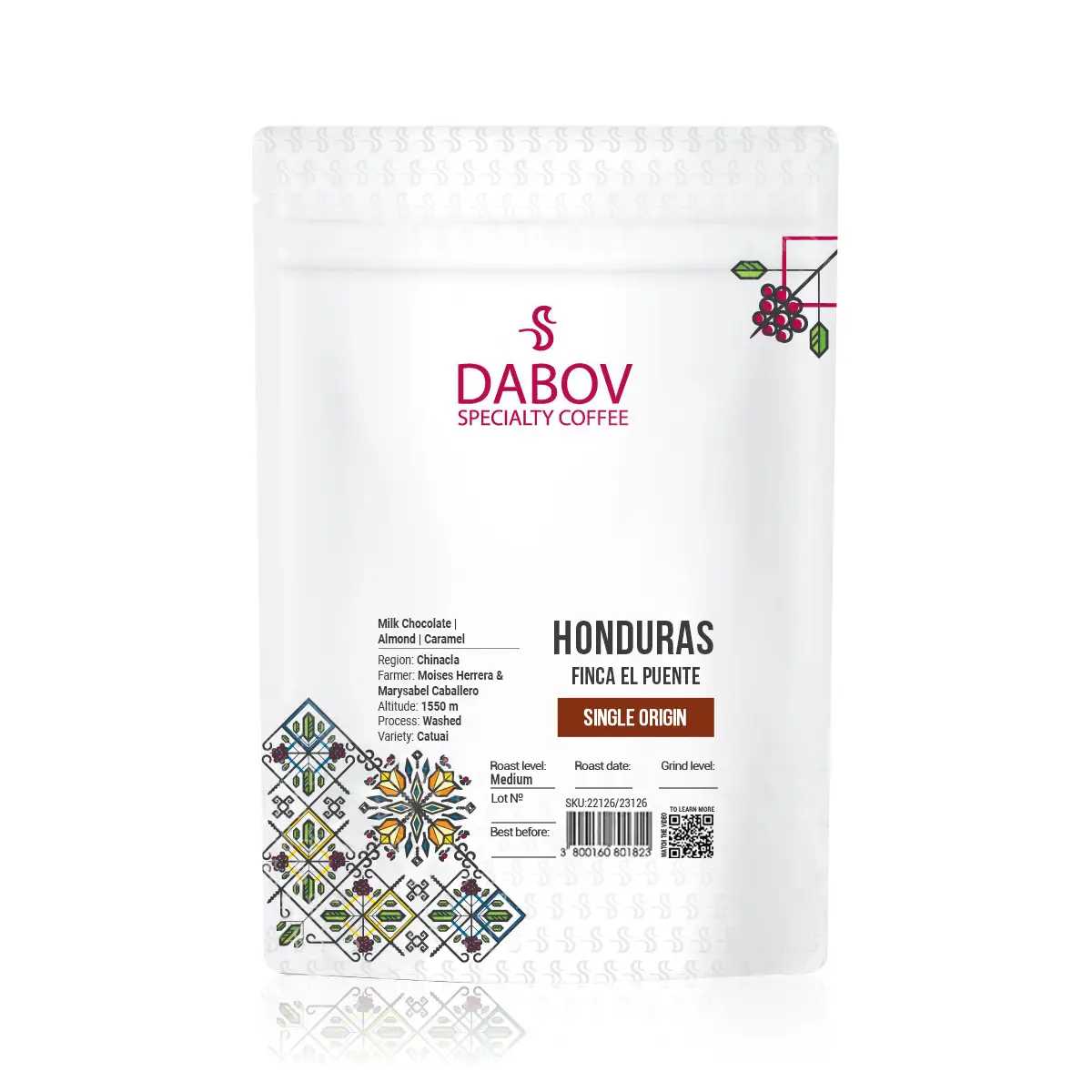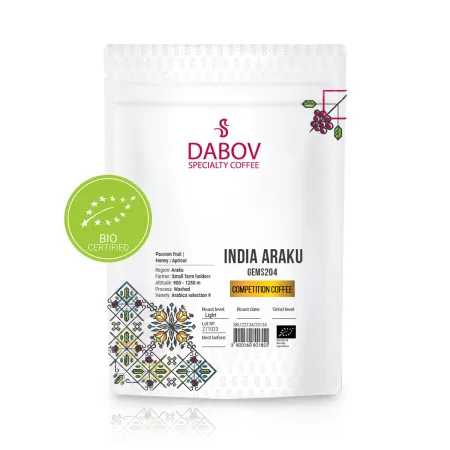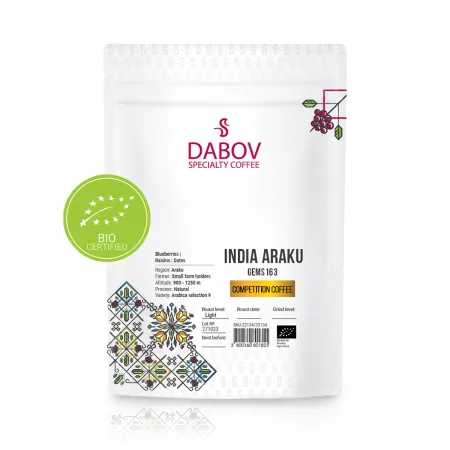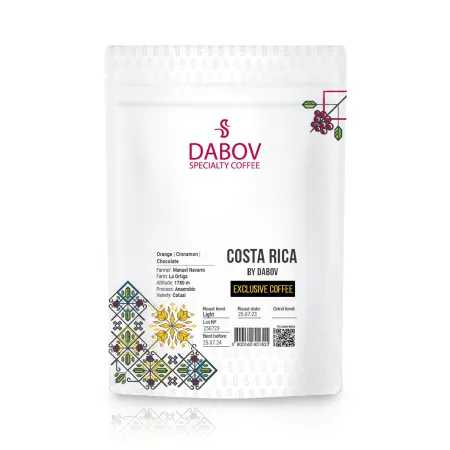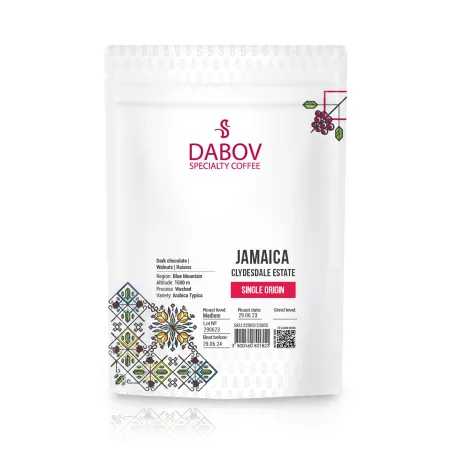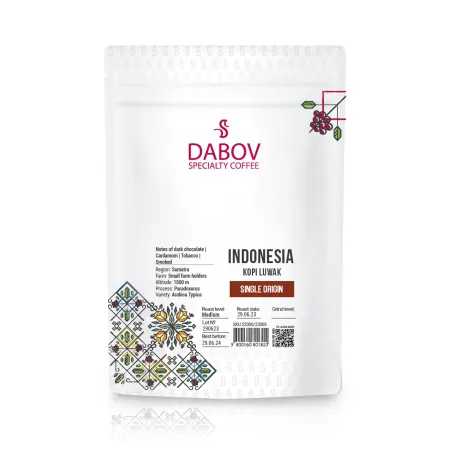How to Achieve Consistent Results with Home Coffee Roasting
Home coffee roasting is gaining popularity among enthusiasts who seek the satisfaction of crafting their own blends. But achieving consistency, which is crucial for flavor and quality, can be challenging. In this guide, we delve into the fundamentals of coffee roasting, covering essential equipment and techniques. You'll learn how to create a roasting profile, manage timing and temperature, and troubleshoot common issues. With record keeping and continuous experimentation, you can elevate your roasting skills and enjoy a perfect cup every time. Embrace the journey of home coffee roasting and become a master of your brew!
Coffee enthusiasts around the world are increasingly turning to home coffee roasting as a way to elevate their coffee experience. This growing trend offers not only the satisfaction of crafting your own perfect cup but also the opportunity to explore the nuanced world of coffee flavors. However, the key to truly enjoying home-roasted coffee lies in achieving consistent results. In this comprehensive guide, we'll delve deep into the art and science of home coffee roasting, providing you with expert insights and techniques to help you master this rewarding craft.
Introduction
Home coffee roasting is more than just a hobby; it's a journey into the heart of coffee's complex flavor profile. By roasting your own beans, you gain control over every aspect of your coffee's taste, aroma, and overall quality. But with this control comes the challenge of consistency. Achieving consistent results in home coffee roasting is crucial for several reasons. First, it allows you to replicate your favorite flavors time and time again. Second, it helps you understand the nuances of different beans and roasting techniques. Finally, consistency in roasting is the foundation upon which you can build and refine your coffee palate.
Understanding Coffee Roasting Fundamentals
What is Coffee Roasting?
At its core, coffee roasting is the process of transforming green coffee beans into the aromatic, flavorful beans we use to brew our favorite beverages. This transformation involves a complex series of chemical reactions triggered by heat. During roasting, the beans undergo significant changes in their physical and chemical properties. Sugars caramelize, acids develop, and aromatic compounds form, all contributing to the final flavor profile of the coffee.
The roasting process is both an art and a science. It requires a deep understanding of how heat interacts with the beans at different stages and how these interactions influence the final product. Mastering coffee roasting means learning to control these variables to consistently produce the desired flavor profile.
The Roasting Process
The coffee roasting process can be broken down into several key stages, each characterized by distinct physical and chemical changes in the beans:
- Drying Stage: This initial phase involves the evaporation of moisture from the green beans. The beans gradually turn from green to yellow as they heat up.
- Yellowing: As the beans continue to heat, they turn a pale yellow color. This stage is crucial for developing the bean's structure and preparing it for the reactions to come.
- First Crack: This is a critical point in the roasting process. The beans make an audible cracking sound as they expand and release built-up gases. This marks the beginning of light roast coffee.
- Development Stage: Between the first and second crack, the beans develop their flavor profile. This is where the roaster's skill comes into play, as timing is crucial for achieving the desired taste.
- Second Crack: If roasting continues, the beans will reach a second cracking stage. This marks the beginning of dark roast coffee and is characterized by oils appearing on the surface of the beans.
- Cooling: Immediately after reaching the desired roast level, the beans must be cooled quickly to stop the roasting process and lock in the flavors.
Understanding these stages is crucial for achieving consistency in your home roasting. Each stage presents an opportunity to influence the final flavor of your coffee, and mastering the timing of these stages is key to replicating your desired roast profile.
Factors Influencing Roasting Consistency
Several variables can affect the consistency of your home coffee roasting:
- Bean Quality: The quality and origin of your green coffee beans play a significant role in roasting consistency. Different beans have varying densities, moisture content, and chemical compositions, all of which affect how they roast.
- Roasting Equipment: The type and quality of your roasting equipment can greatly impact consistency. Different roasters have varying heat distribution patterns and levels of control over temperature and airflow.
- Environmental Conditions: Factors such as ambient temperature, humidity, and altitude can all influence the roasting process. These variables can affect how quickly the beans heat up and how they respond to different roasting profiles.
- Batch Size: The amount of beans you roast at once can affect heat distribution and roasting time. Consistency in batch size is important for replicating results.
- Roasting Profile: The specific combination of time and temperature you use during roasting, known as the roasting profile, is perhaps the most critical factor in achieving consistency.
- Cooling Process: How quickly and evenly you cool your beans after roasting can impact the final flavor and consistency of your roast.
By understanding and controlling these variables, you can work towards achieving more consistent results in your home coffee roasting endeavors.
Choosing the Right Equipment
Home Roasting Appliances
The choice of roasting equipment is a crucial decision for any home coffee roaster. There are several types of home roasting appliances available, each with its own advantages and challenges when it comes to achieving consistency:
- Air Roasters: These machines use hot air to roast the beans, similar to a popcorn popper. Air roasters typically offer quick, even roasts and are excellent for light to medium roasts. They're often more affordable and easier to use for beginners. However, they usually have smaller batch sizes and may struggle with darker roasts.
- Drum Roasters: These roasters use a rotating drum to tumble the beans while applying heat. Drum roasters often provide more control over the roasting process and are better suited for larger batches and darker roasts. They can produce more consistent results but typically come with a higher price tag and a steeper learning curve.
- Stovetop Roasters: These manual roasters are used on a stovetop or over an open flame. While they offer a more hands-on approach and can be quite affordable, achieving consistency with stovetop roasters can be challenging as they require constant attention and manual temperature control.
- Fluid Bed Roasters: These are similar to air roasters but use a different mechanism to circulate hot air. They often provide more even roasting and better temperature control than basic air roasters.
- Home Coffee Roasting Machines: These are purpose-built appliances designed specifically for home coffee roasting. They often come with programmable settings and can offer excellent consistency, but they can be quite expensive.
When choosing a roaster, consider factors such as batch size, level of control, ease of use, and your budget. Remember that while more expensive equipment can offer better control and consistency, skilled roasters can achieve excellent results with simpler setups through practice and careful attention to detail.
Essential Accessories for Home Roasting
In addition to your primary roasting equipment, several accessories can help you achieve more consistent results:
- Thermometer: A reliable thermometer is crucial for monitoring bean temperature during roasting. Infrared thermometers are popular for their ease of use and accuracy.
- Scale: Precise measurements are key to consistency. A digital scale accurate to 0.1 grams will help you maintain consistent batch sizes and track weight loss during roasting.
- Timer: Accurate timing is essential for replicating roast profiles. A dedicated timer or a smartphone app can help you track different stages of the roast.
- Cooling Tray: Rapid and even cooling is crucial for stopping the roast at the right moment. A dedicated cooling tray with a fan can help achieve this.
- Green Bean Storage Containers: Proper storage of your green beans helps maintain their quality and consistency. Airtight containers stored in a cool, dry place are ideal.
- Roast Log or Software: Keeping detailed records of your roasts is crucial for consistency. Whether you use a physical notebook or specialized software, tracking your roasts helps you replicate successes and learn from mistakes.
- Chaff Collector: Many roasters produce chaff (the outer skin of the coffee bean that comes off during roasting). A chaff collector helps keep your roasting area clean and can prevent chaff from interfering with the roasting process.
- Bean Probe: For more advanced setups, a bean probe that can be inserted directly into the roasting chamber provides highly accurate temperature readings of the beans themselves.
Investing in these accessories and learning to use them effectively can significantly improve your ability to achieve consistent results in home coffee roasting.
Mastering Coffee Roasting Techniques
Pre-Roasting Preparations
Achieving consistency in coffee roasting begins long before you turn on your roaster. Proper preparation is key to setting yourself up for success:
- Selecting High-Quality Green Beans: The quality of your green beans directly impacts the quality and consistency of your roasted coffee. Look for beans from reputable suppliers who provide detailed information about the beans' origin, processing method, and harvest date. Freshness is crucial; ideally, use beans within a year of harvest.
- Understanding Bean Characteristics: Different beans have different densities, moisture content, and flavor profiles. Familiarize yourself with the characteristics of the beans you're working with. For example, denser beans from higher altitudes often require longer roasting times and higher temperatures.
- Sorting Beans: Before roasting, inspect your beans and remove any defective ones. Uneven bean sizes can lead to inconsistent roasting, so consider sorting your beans by size for more uniform results.
- Measuring Precisely: Consistency starts with using the same amount of beans each time. Use a digital scale to measure your beans accurately.
- Preheating Your Roaster: Many roasters benefit from being preheated. This helps ensure that the beans enter a consistent environment each time you roast.
- Checking Environmental Conditions: Be aware of the ambient temperature and humidity in your roasting area. These factors can affect how your beans roast, so you may need to make adjustments to your roasting profile based on environmental conditions.
- Preparing Your Workspace: Ensure you have all your tools and accessories ready before you start roasting. This includes your cooling tray, thermometer, timer, and any logging tools you use.
By paying attention to these pre-roasting preparations, you set a strong foundation for achieving consistent results in your home coffee roasting.
Developing a Roasting Profile
A roasting profile is essentially a roadmap for your roast. It's a detailed plan that outlines how the temperature will change over time during the roasting process. Developing and replicating a roasting profile is crucial for achieving consistency in your home roasts.
Understanding Roast Profiles
A typical roast profile includes several key elements:
- Charge Temperature: This is the temperature at which you add the beans to the roaster.
- Rate of Rise (RoR): This refers to how quickly the temperature increases during different stages of the roast.
- First Crack Temperature and Time: The point at which the beans first crack, marking the beginning of light roast coffee.
- Development Time: The time between first crack and the end of the roast.
- End Temperature: The final temperature at which you end the roast.
To create a roasting profile:
- Start with a Basic Profile: Begin with a standard profile for the type of roast you're aiming for (light, medium, or dark).
- Log Everything: Record all aspects of your roast, including time, temperature, and any observations about the beans' color, smell, or sound.
- Taste and Evaluate: After roasting, cup your coffee and make notes on the flavor profile.
- Adjust and Refine: Based on your tasting notes, make small adjustments to your profile. Perhaps you'll increase the development time for more body, or decrease the end temperature for less bitterness.
- Repeat and Perfect: Continue this process of roasting, tasting, and adjusting until you achieve your desired flavor profile.
Remember, the goal is not just to create a great roasting profile, but to be able to replicate it consistently. This is where detailed record-keeping becomes crucial.
Timing and Temperature Control
Mastering the interplay between time and temperature is at the heart of consistent coffee roasting. Here are some key principles to keep in mind:
- Monitor Bean Temperature, Not Just Environmental Temperature: The temperature inside your roaster can be different from the actual bean temperature. If possible, use a bean probe to get accurate readings.
- Understand the Importance of Rate of Rise (RoR): The rate at which the bean temperature increases can significantly impact flavor development. A declining RoR towards the end of the roast is generally desirable for balanced flavors.
- Pay Attention to Color Changes: The color of the beans is a crucial indicator of roast development. Learn to recognize the subtle changes from green to yellow to various shades of brown.
- Listen for the Cracks: The timing of the first and second crack are important markers in the roasting process. Learn to recognize these sounds and use them as guides in your roasting.
- Use Smell as an Indicator: The aroma of the beans changes throughout the roast. Learning to recognize these changes can help you gauge the progress of your roast.
- Practice Consistent Agitation: Whether you're using a drum roaster or manually stirring beans, consistent agitation helps ensure even heat distribution.
- Master Your Cooling Process: Rapidly cooling your beans at the right moment is crucial for stopping the roast and locking in flavors. Develop a consistent cooling process that you can replicate each time.
By focusing on these aspects of timing and temperature control, you'll be well on your way to achieving more consistent results in your home coffee roasting.
Coffee Roasting Tips for Consistency
Record Keeping
Detailed record keeping is perhaps the most crucial tool for achieving consistency in home coffee roasting. Here's how to create an effective roasting log:
- Use a Dedicated Notebook or Software: Whether you prefer a physical notebook or specialized roasting software, choose a method that works for you and stick with it.
- Record Basic Information: For each roast, note the date, bean type, origin, processing method, and batch size.
- Log Roasting Parameters: Record your charge temperature, first crack time and temperature, end time and temperature, and any other significant points in your roast profile.
- Note Environmental Factors: Record the ambient temperature and humidity, as these can affect your roast.
- Describe the Roast: Make notes about the bean color at different stages, any unusual smells or sounds, and your overall impressions of how the roast progressed.
- Include Post-Roast Observations: After cooling, note the color of the beans, any visible oils, and the aroma.
- Add Cupping Notes: Once you've brewed and tasted the coffee, add detailed notes about the flavor profile, body, acidity, and any other characteristics you notice.
- Review and Analyze: Regularly review your logs to identify patterns and areas for improvement. This analysis is key to refining your roasting skills and achieving greater consistency.
Remember, the goal of record keeping is not just to document what you've done, but to provide a roadmap for replicating your successes and learning from your mistakes.
Experimentation and Adjustment
While consistency is the goal, achieving it often requires a period of controlled experimentation and careful adjustment. Here's how to approach this process:
- Start with Small Changes: When adjusting your roast profile, make one small change at a time. This could be altering the charge temperature by 5°F, extending the development time by 15 seconds, or slightly adjusting your heat application during a specific phase of the roast.
- Use A/B Testing: Roast two batches of the same beans, changing only one variable between them. This allows you to isolate the impact of that specific change.
- Be Patient: Allow enough time between adjustments to properly evaluate the results. This may mean waiting several days for the coffee to degas before cupping.
- Trust Your Palate: While roast curves and color charts are useful tools, ultimately, the taste of the coffee is what matters most. Develop your palate and trust your taste buds to guide your adjustments.
- Embrace Seasonal Changes: Remember that coffee is an agricultural product, and beans can change from season to season. Be prepared to make adjustments to your roasting profile as you work with new crop beans.
- Learn from Others: Engage with the home roasting community through forums, local groups, or online workshops. Sharing experiences and learning from others can provide valuable insights for your own roasting journey.
By approaching experimentation and adjustment methodically, you can refine your roasting skills and work towards greater consistency in your results.
Tasting and Feedback
Developing a refined palate and implementing a structured tasting process is crucial for achieving consistency in your home coffee roasting. Here's how to approach tasting and feedback:
- Implement a Consistent Cupping Protocol: Use a standardized cupping method, such as the one outlined by the Specialty Coffee Association (SCA). This ensures you're evaluating each roast under the same conditions.
- Wait for Optimal Flavor Development: Most coffees reach their peak flavor 24-72 hours after roasting. Be patient and allow your coffee to rest before evaluating it.
- Take Detailed Tasting Notes: Record your observations on aroma, flavor, acidity, body, and aftertaste. Use a flavor wheel to help articulate the nuances you're tasting.
- Compare to Your Target Profile: Always taste with your goal in mind. How does this roast compare to your intended flavor profile?
- Seek Outside Opinions: While your palate is crucial, getting feedback from others can provide valuable perspectives. Consider organizing tasting sessions with fellow coffee enthusiasts.
- Taste Across Brewing Methods: If possible, try your roast using different brewing methods. Some characteristics may be more pronounced in espresso versus pour-over, for example.
- Develop Your Palate: Regularly taste a variety of coffees, including professionally roasted beans, to continually educate your palate.
Remember, tasting is not just about enjoying your coffee; it's a crucial feedback mechanism for improving your roasting consistency. Each cup is an opportunity to learn and refine your skills.
Troubleshooting Common Roasting Issues
Common Problems in Home Roasting
Even experienced home roasters encounter challenges. Here are some common issues and their potential causes:
- Uneven Roasting: This often results in some beans being over-roasted while others are under-roasted. Possible causes include:
- Inconsistent heat distribution in the roaster
- Inadequate agitation of the beans during roasting
- Variations in bean size or density within the batch
- Baked Flavor: This flat, dull flavor profile is often described as bread-like or cardboard-like. It can be caused by:
- Extending the roast time too long, especially at lower temperatures
- A too-gentle heat curve that doesn't develop flavors properly
- Scorching: This results in burnt flavors and can be caused by:
- Too high initial temperature
- Poor agitation, allowing beans to remain in contact with hot surfaces for too long
- Tipping: This is when the ends of the beans become darker than the rest, often due to:
- Too much heat too quickly at the beginning of the roast
- Inadequate airflow in air roasters
- Underdevelopment: This results in grassy or sour flavors and can be caused by:
- Ending the roast too soon after first crack
- Not enough heat during the development phase
- Overdevelopment: This leads to overly dark, bitter coffee and is often due to:
- Extending the roast too long after first crack
- Too much heat during the development phase
- Inconsistent Results Between Batches: This overarching issue can be caused by:
- Variations in ambient temperature or humidity
- Inconsistent pre-heating of the roaster
- Lack of precise measurement and record-keeping
Understanding these common issues is the first step in troubleshooting and improving your roasting consistency.
Solutions for Achieving Consistent Results
Addressing the common problems outlined above requires a combination of technique refinement and equipment management. Here are some solutions to help you achieve more consistent results:
- For Uneven Roasting:
- Ensure your roaster is clean and functioning properly
- Improve bean agitation through stirring or adjusting drum speed
- Sort beans by size before roasting
- Consider smaller batch sizes to improve heat distribution
- To Avoid Baked Flavors:
- Increase your rate of rise, especially in the middle of the roast
- Aim for a total roast time of 8-12 minutes for most coffees
- Ensure your roaster can achieve sufficiently high temperatures
- To Prevent Scorching:
- Start with a lower charge temperature and gradually increase heat
- Improve agitation in your roaster
- Clean your roaster regularly to prevent build-up that can cause hot spots
- To Avoid Tipping:
- Reduce initial heat and gradually increase it
- Improve airflow in air roasters
- Ensure beans are moving freely in the roasting chamber
- For Proper Development:
- Learn to identify first crack accurately
- Aim for a development time of 15-25% of total roast time
- Use a bean probe to monitor actual bean temperature
- To Prevent Overdevelopment:
- Have your cooling system ready before the roast ends
- Practice stopping the roast at the right moment
- Monitor development time and end temperature carefully
- For Consistent Results Between Batches:
- Keep detailed roast logs and analyze them regularly
- Use the same batch size and initial charge weight each time
- Preheat your roaster consistently
- Monitor and account for changes in ambient conditions
Remember, achieving consistency in home coffee roasting is an ongoing process of learning and refinement. Each roast is an opportunity to improve your skills and understanding of the complex interplay of factors that influence your coffee's flavor.
Maintaining Consistency Over Time
Regular Equipment Maintenance
Proper maintenance of your roasting equipment is crucial for achieving consistent results over time. Here's a comprehensive guide to keeping your roaster in top condition:
- Clean After Every Roast:
- Remove chaff and any loose beans from the roasting chamber
- Wipe down surfaces with a dry cloth to remove oils and residue
- Clean the chaff collector thoroughly
- Deep Clean Regularly:
- For home roasters, a deep clean every 20-30 roasts is typically sufficient
- Follow manufacturer guidelines for disassembly and cleaning
- Use a brush to remove built-up oils and residue from hard-to-reach areas
- For air roasters, ensure air vents are clear of debris
- Check and Replace Parts:
- Regularly inspect gaskets, seals, and filters, replacing as needed
- Check electrical connections and cords for any signs of wear
- For drum roasters, inspect the drum for any signs of warping or damage
- Calibrate Temperature Probes:
- Verify the accuracy of your temperature probes at least once a month
- Use a known temperature point (like boiling water) to check calibration
- Recalibrate or replace probes as necessary
- Maintain Cooling Systems:
- Clean cooling trays after each use
- For systems with fans, ensure they're free of dust and debris
- Check that cooling systems are operating at full capacity
- Service Motors and Moving Parts:
- For drum roasters, lubricate bearings as recommended by the manufacturer
- Listen for any unusual noises that might indicate wear on moving parts
- Update Software and Firmware:
- If your roaster has digital components, ensure you're running the latest software versions
- Check for firmware updates that might improve performance or add features
- Document Maintenance:
- Keep a log of all maintenance activities
- Note any changes in performance after maintenance
- Professional Service:
- Consider having your roaster professionally serviced annually, especially for more complex or expensive machines
By maintaining your equipment properly, you ensure that it performs consistently over time, which is crucial for achieving repeatable results in your roasting.
Continuous Learning and Adaptation
The world of coffee roasting is constantly evolving, with new techniques, equipment, and knowledge emerging regularly. To maintain and improve consistency over time, it's essential to adopt a mindset of continuous learning and adaptation. Here's how to stay at the forefront of home coffee roasting:
- Stay Informed About Coffee Trends:
- Subscribe to coffee industry publications and blogs
- Follow reputable coffee roasters and experts on social media
- Attend coffee expos and events when possible
- Participate in Online Communities:
- Join coffee roasting forums and discussion groups
- Engage in conversations, ask questions, and share your experiences
- Participate in online challenges or competitions to push your skills
- Attend Workshops and Courses:
- Look for local roasting workshops in your area
- Consider online courses offered by respected coffee education providers
- Pursue certifications like the SCA Coffee Skills Program
- Experiment with New Techniques:
- Try different roasting approaches, such as profile roasting or drum speed modulation
- Experiment with various bean origins and processing methods
- Test new equipment or accessories as they become available
- Network with Other Roasters:
- Connect with local roasters or home roasting enthusiasts
- Organize or participate in coffee tasting events
- Consider mentorship opportunities, either as a mentee or mentor
- Stay Updated on Scientific Research:
- Follow coffee science publications for insights into roasting chemistry
- Understand how factors like altitude, soil composition, and processing methods affect green beans
- Embrace Technology:
- Explore roasting software and apps that can help track and analyze your roasts
- Consider investing in more advanced equipment as your skills progress
- Practice Cupping Regularly:
- Develop your palate by regularly cupping your own roasts
- Include commercially roasted coffees in your cuppings for comparison
- Visit Coffee Farms if Possible:
- Understanding the entire coffee supply chain can provide valuable insights into roasting
- Direct relationships with farmers can lead to access to unique beans
- Teach Others:
- Sharing your knowledge can reinforce your own understanding
- Consider starting a blog or YouTube channel to document your roasting journey
Remember, the key to maintaining consistency over time is not just repeating the same processes, but continually refining and adapting your approach based on new knowledge and experiences. By committing to ongoing learning and adaptation, you'll be well-equipped to handle the challenges of home coffee roasting and consistently produce excellent results.
Conclusion
Achieving consistent results in home coffee roasting is a journey that combines science, art, and dedication. By understanding the fundamentals of coffee roasting, choosing the right equipment, mastering roasting techniques, and committing to continuous learning and adaptation, you can elevate your home roasting game to produce consistently excellent coffee.
Remember that consistency doesn't mean rigidity. The goal is to be able to replicate your desired flavor profiles reliably while also having the flexibility to adjust to different beans, changing conditions, and evolving preferences. Embrace the process of experimentation and refinement, always guided by careful observation, meticulous record-keeping, and a well-developed palate.
As you continue on your home roasting journey, keep in mind that every roast is an opportunity to learn and improve. Celebrate your successes, learn from your mistakes, and always strive to deepen your understanding of the complex and rewarding world of coffee roasting.
Whether you're roasting for personal enjoyment or considering turning your passion into a business, the principles of consistency outlined in this guide will serve you well. So fire up your roaster, keep detailed logs, taste critically, and most importantly, enjoy the wonderful world of fresh, home-roasted coffee.
Additional Resources
To further your journey in home coffee roasting, consider exploring these recommended resources:
- Books:
- "The Coffee Roaster's Companion" by Scott Rao
- "Coffee Roasting: Best Practices" by Scott Rao
- "The World Atlas of Coffee" by James Hoffmann
- Websites:
- Sweet Maria's (www.sweetmarias.com) - Excellent source for green beans and roasting information
- Home-Barista (www.home-barista.com) - Forum with a dedicated home roasting section
- Roast Magazine (www.roastmagazine.com) - Industry publication with valuable articles and resources
- Software and Apps:
- Artisan - Open-source software for logging and analyzing roasts
- RoastMaster - iOS app for tracking roasts and inventory
- YouTube Channels:
- Sweet Maria's
- Mill City Roasters
- European Coffee Trip
- Online Courses:
- SCA Coffee Skills Program
- Boot Coffee Campus Online Courses
Remember, the best resource is your own experience. Keep roasting, keep learning, and enjoy the journey to consistently excellent home-roasted coffee.



